Moungi G. Bawendi, Louis E. Brus, and Alexei I. Ekimov, the three Nobel laureates in Chemistry this year, are pioneers in nanotechnology.
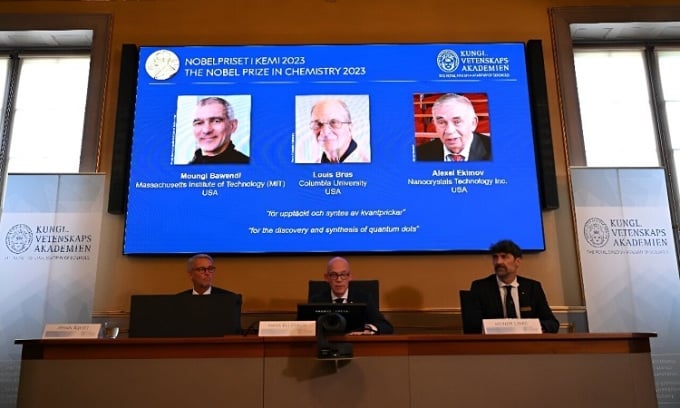
The Nobel Committee announced the three scientists who won the 2023 Nobel Prize in Chemistry. Photo: Phys.org
In the 1980s, Alexi Ekimov (78 years old) and Louis Brus (80 years old) worked independently and successfully created "quantum dots," nanoparticles found today in next-generation TV screens and used to illuminate tumors in the body. A decade later, Moungi Bawendi (62 years old) revolutionized the method for producing quantum dots with high precision and on a large scale, paving the way for a range of applications.
Perseverance
Bawendi was born in Paris to a Tunisian father and a French mother. His family emigrated to the United States when he was 10 years old. Although Bawendi excelled in science subjects in high school, he failed his first chemistry class at Harvard University. "The experience of getting my first F could have easily ruined me. It was the lowest grade I ever got in a class," the scientist shared.
But Bawendi persevered in his studies, graduating with a bachelor's degree and then a doctorate from the University of Chicago. Next, he joined Bell Laboratories with Brus and eventually became a professor at the Massachusetts Institute of Technology (MIT). "I am deeply honored to share the Nobel Prize with Louis Brus, my postdoctoral supervisor. Although I am a professor myself, I still try to emulate his authority and teaching style," Bawendi said.
Bawendi developed his colleagues' work and in 1993, he achieved success in significantly improving the method of creating quantum dots, finding the right solvent and temperature to achieve nanocrystals of specific sizes.
Colored glass experiment
Ekimov and Brus grew up in the post-war period. Ekimov was born in the Soviet Union and graduated from Leningrad University. He was fascinated by colored glass and the fact that each compound could produce multiple colors. Through experiments with temperature and heating time of molten glass, he discovered that it was possible to change the size of the finished product particles, and the smaller the particles, the bluer the light they emitted.
Ekimov published his discovery in a Soviet scientific journal in 1981 and was the first to create quantum dots, particles predicted by physics theory in the early 20th century but only later proven in practice.
At the same time, Brus worked at Bell Laboratories in the United States, a company renowned for nurturing scientific discoveries. He conducted experiments involving cutting particles into smaller sizes to provide a larger surface area and faster chemical reactions. While working, he noticed that the optical characteristics and many other properties of particles changed as they became smaller, a phenomenon that could only be explained by quantum mechanics.
Sputnik Generation
"I am a member of the Sputnik generation, growing up after World War II when America significantly expanded its science and technology fields in response to the Cold War," Brus shared in his memoir after receiving the Kavli Prize in 2008.
Showing a talent for mathematics and science from a young age, he grew up in the suburbs of Kansas City. There, he developed a love for tools and machinery while working at a local hardware store after school and on weekends.
Initially, Brus thought he would follow in his father's footsteps into business. But after earning his doctorate from Columbia University in New York in 1969, he joined the U.S. Navy and became a researcher at a laboratory in Washington. Then, in 1972, he began working at Bell Laboratories, a position he held for 23 years.
Brus is now a professor at Columbia University and firmly believes in the power of science. "Scientists struggle with experiments every day, and often fail to see the enormous strides in science and technology over decades. Science creates a better life for humanity despite wars, economic crises, and natural disasters," Brus shared.
An Khang (According to AFP )
Source link






![[Image] Central Party Office summarizes work in 2025](/_next/image?url=https%3A%2F%2Fvphoto.vietnam.vn%2Fthumb%2F1200x675%2Fvietnam%2Fresource%2FIMAGE%2F2025%2F12%2F18%2F1766065572073_vptw-hoi-nghi-tong-ket-89-1204-jpg.webp&w=3840&q=75)





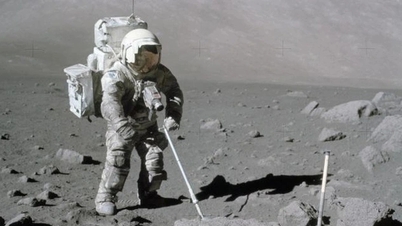

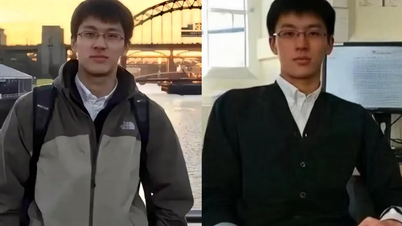

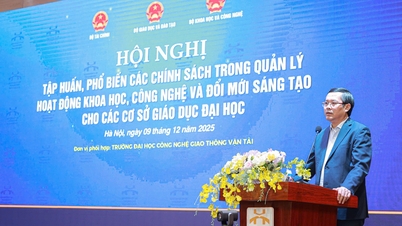
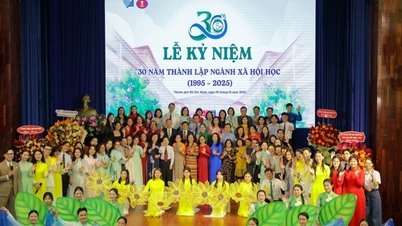





















































































Comment (0)